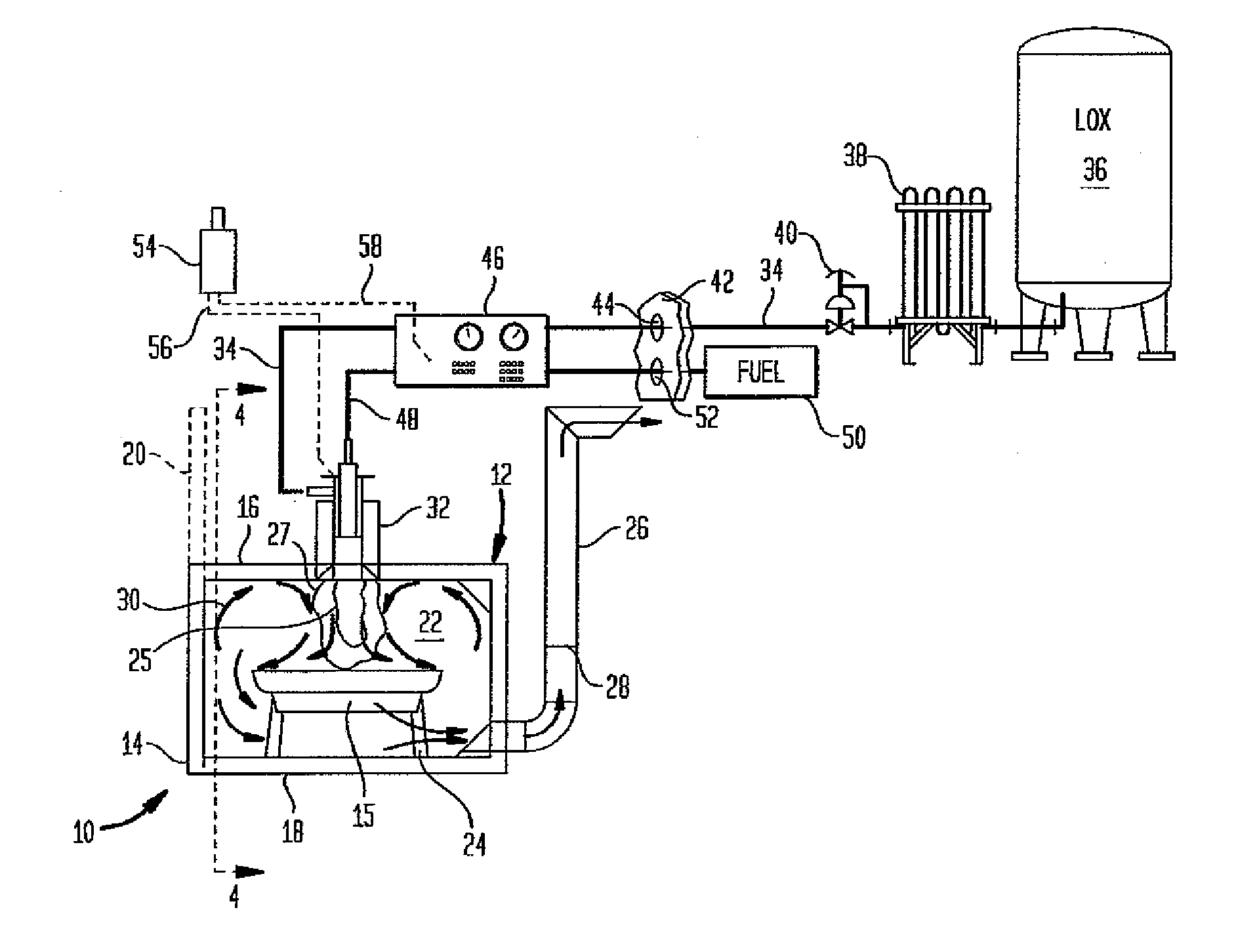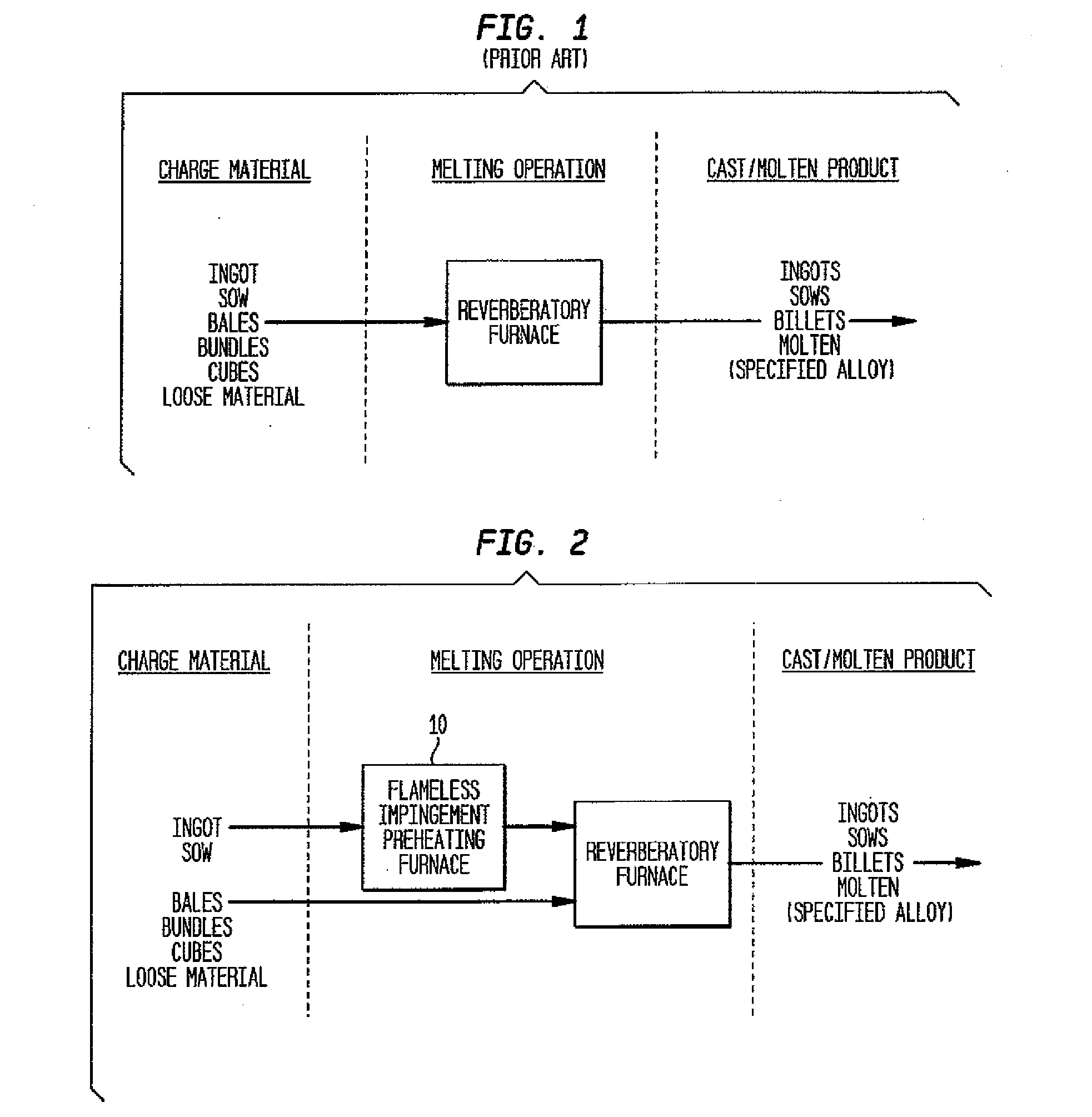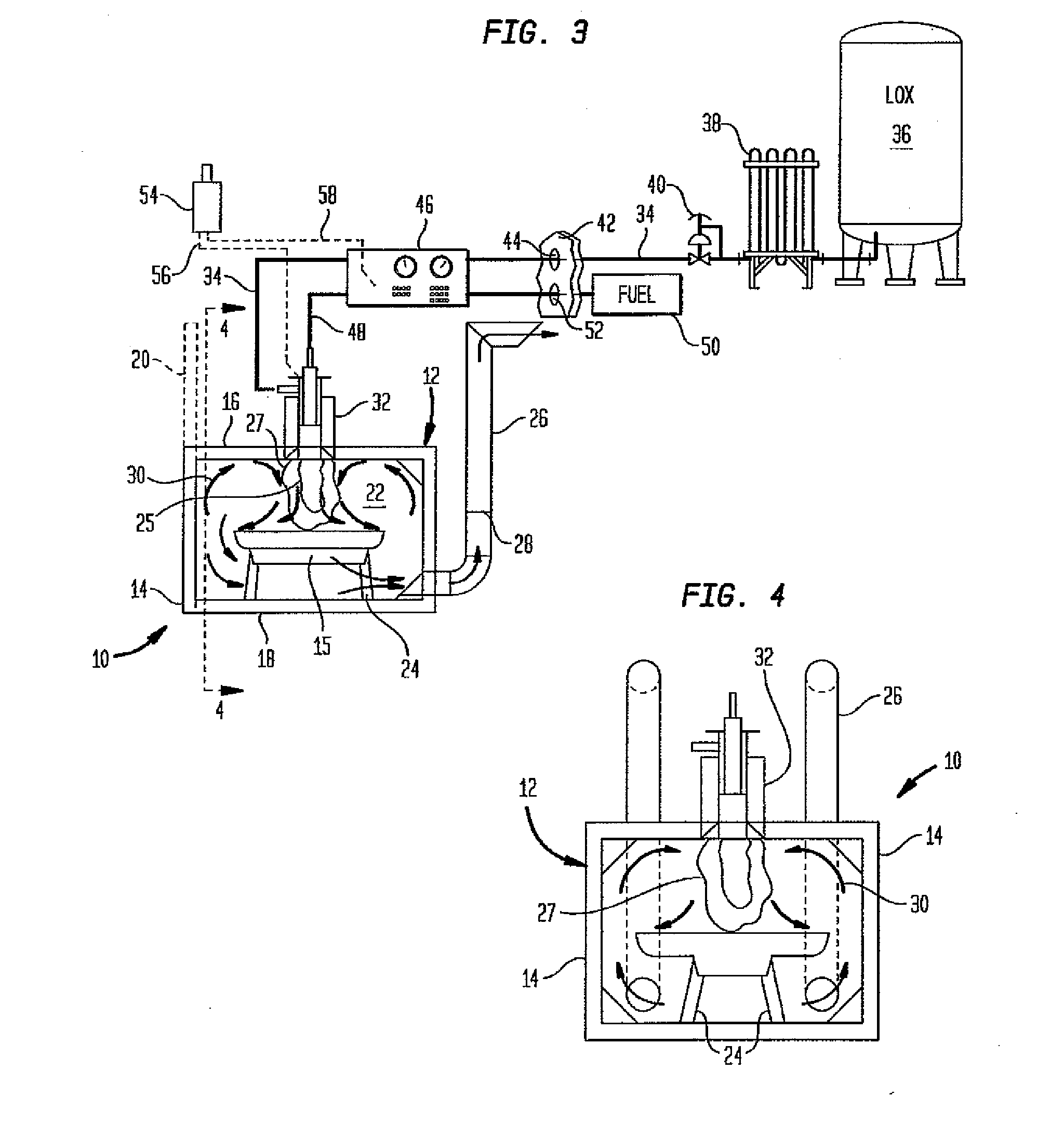Flameless impingement preheating furnace
a furnace and flameless technology, applied in the field of flameless impingement preheating furnaces, can solve the problems of increased risk of steam bubbles submerged in molten metal within, injury and equipment damage, etc., and achieve the effects of less energy consumption, improved heat exchange efficiency, and improved heat exchange efficiency
- Summary
- Abstract
- Description
- Claims
- Application Information
AI Technical Summary
Benefits of technology
Problems solved by technology
Method used
Image
Examples
Embodiment Construction
[0015]Referring to FIG. 2, the preheater furnace embodiment of the present invention shown generally at 10 is added to or used in conjunction with a known melter. The preheater 10, when combined with a conventional melting furnace, provides production flexibility in terms of a) the ability / option to heat the scrap in the preheater rather than in the melting furnace, and b) the ability to heat charge material in the preheater while at the same time heating material in the conventional melting furnace, thereby increasing the production capacity of the facility (in other words, expanding the operating window).
[0016]Now referring to FIGS. 3 and 4, the preheater furnace embodiment 10 is shown for use with conventional melting furnaces (not shown). The preheater 10 includes a housing 12 which may have a plurality of side walls 14 depending upon the shape of the housing 12. A top 16 or crown and a bottom 18 or floor is provided for the housing 12. One of the side walls 12 is provided with ...
PUM
 Login to View More
Login to View More Abstract
Description
Claims
Application Information
 Login to View More
Login to View More - R&D
- Intellectual Property
- Life Sciences
- Materials
- Tech Scout
- Unparalleled Data Quality
- Higher Quality Content
- 60% Fewer Hallucinations
Browse by: Latest US Patents, China's latest patents, Technical Efficacy Thesaurus, Application Domain, Technology Topic, Popular Technical Reports.
© 2025 PatSnap. All rights reserved.Legal|Privacy policy|Modern Slavery Act Transparency Statement|Sitemap|About US| Contact US: help@patsnap.com



